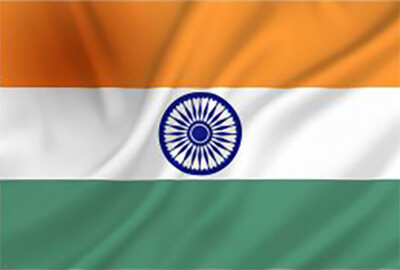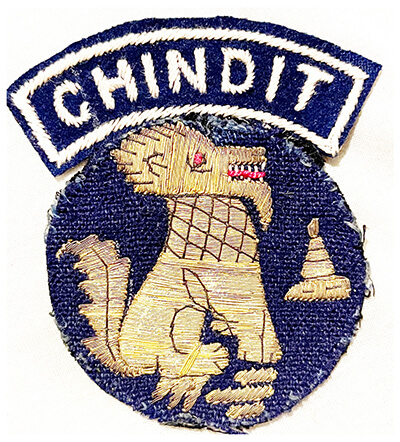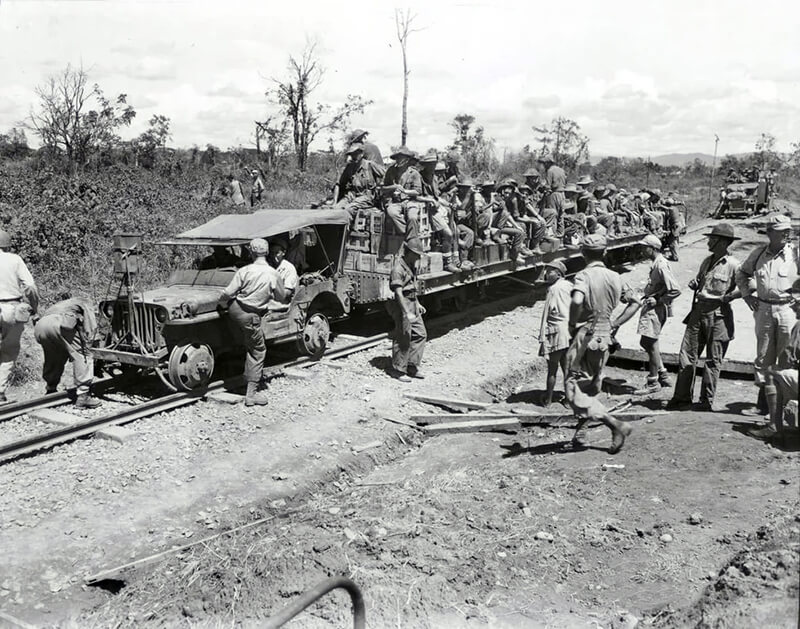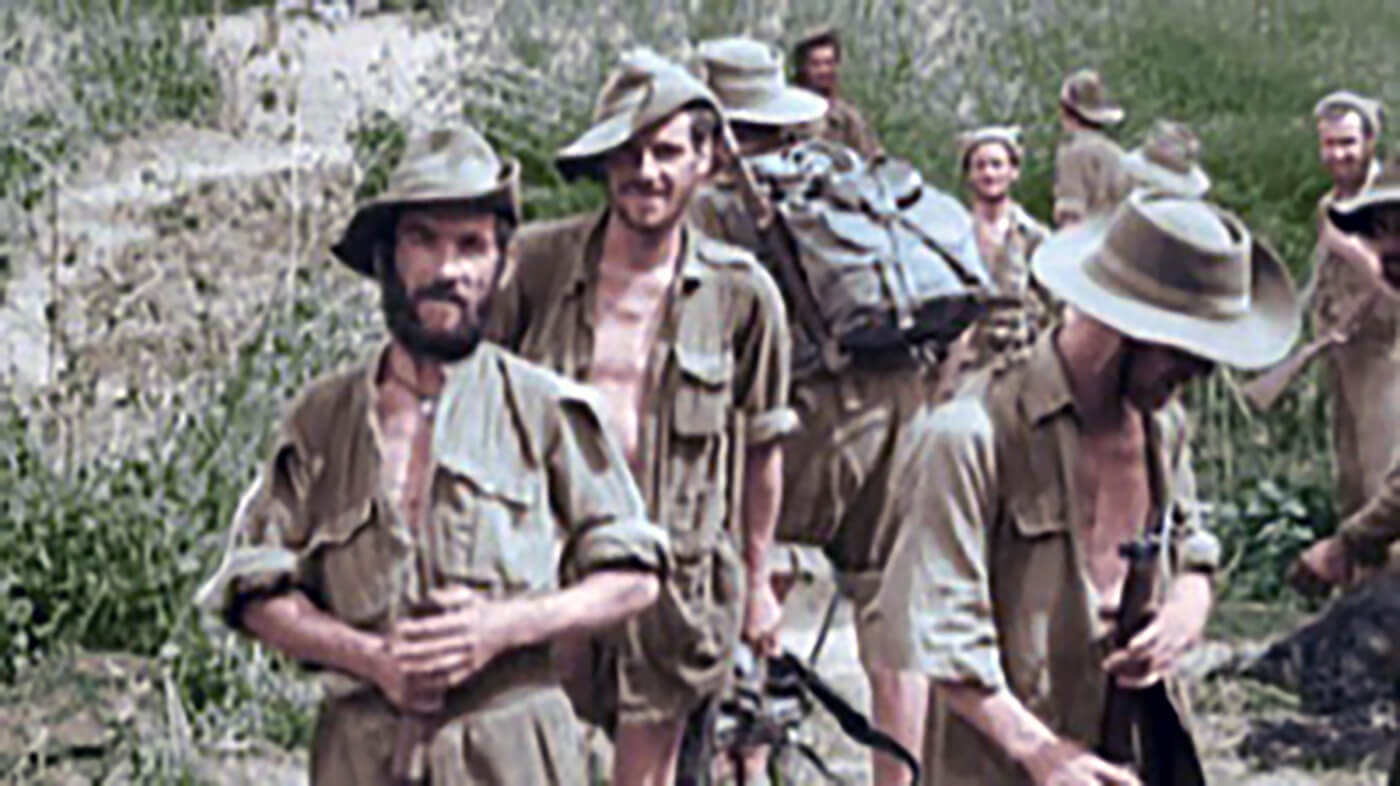| Page Created |
| July 20th, 2020 |
| Last Updated |
| March 30th, 2023 |
| Country |
  |
| Additional Information |
| Unit Order of Battle Commanders Operations Equipment Multimedia Sources Interactive Page |
| Badge |
 |
| Motto |
| The Boldest Measures are the Safest. |
| Founded |
| July 1944 |
| Disbanded |
| February 1945 |
| Theater of Operations |
| Burma India |
| Operational History of the Chindits |
Founder of the Chindits
The first part operational history of the Chindits is closely related with the life of General Orde Charles Wingate.
Born in India to a British Army officer, Wingate is bound to serve in the army himself. He receives his commission after graduating from the Royal Military Academy at Woolwich in 1923. He is recognised for his horsemanship skills and is subsequently assigned to the Military School of Equitation. His challenging attitude towards instructors, combined with his growing arrogance, makes him unpopular with his fellow Cavalry officers.
After learning Arabic and leading a unit that combats slave traders and ivory poachers along the Ethiopian border, Wingate is posted to Palestine, where he becomes an advocate of unconventional warfare. He is one of the few British officers that supports Zionism and organises a coalition of British/Jewish troops whose counterinsurgency tactics help combat the Arab revolt in British-controlled Palestine during the 1930’s, marking the beginning of his career as a guerrilla fighter.
Wingate establishes the “Special Night Squads,” a joint British and Jewish group aimed at countering Arab saboteurs who target oil pipelines. However, his unwavering advocacy for the establishment of a Jewish state, a contentious political issue at the time, compromised his position as an intelligence officer, leading to his removal and return to England.
World War 2
At the beginning of World War II, General Archibald Wavell assumes command of the Middle East Command in Cairo. In 1941, Wavell sends Wingate to Sudan. Here he creates the “Gideon Force” under General William Platt. The force, which comprises British, Sudanese, and Ethiopian soldiers, is a Special Operations Executive (SOE) unit. Wingate seeks permission from Haile Selassie to include the Jewish Haganah fighters in his team.
The unit is named after the Biblical prophet and judge Gideon, who defeats a much larger enemy force with a small, determined army. Gideon Force’s mission was to expel the Italians from Ethiopia. With just 1,700 men, Wingate’s force harasses and attacks Italian forts and supply lines. At the end of the campaign, his small but formidable team forces the surrender of 20,000 Italian troops.
Wingate catches malaria and, to prevent his detractors from using it against him, choses to consult a local doctor instead of the army medical staff. The doctor prescribes a high dose of Atabrine, which can cause depression as a side effect. Disheartened by the official reaction to his leadership in Abyssinia and battling malaria, Wingate makes a suicide attempt by stabbing himself in the neck. Fortunately, another officer intervenes quickly and saves his life. He is subsequently sent to Britain to recover from both malaria and depression.
Burma
Following General Wavell’s reassignment as the Commander-in-Chief of the India Command, he requests that Wingate is transferred to his command. Reading his report on Ethiopia, Primeminister Winston Churchill agrees. Wavell intends to utilise Wingate’s expertise as a guerrilla fighter in Palestine and Ethiopia to establish a force similar to the Gideon Force on the Burmese front.
In early 1942, Wingate arrives in Asia amidst the Japanese invasion. Despite the circumstances, he takes the opportunity to explore the country. Wingate presents his plan for a guerrilla force to Wavell, which would consist of a specially trained brigade composed of Gurkha (Nepalese), Burmese, and British troops. Captain Aung Thin of the Burmese Rifles suggests calling the unit “Chindits”. A term derived from the Burmese mythological creature Chinthé or Chinthay, whose statues traditionally guard Buddhist temples.
Formation of the Chindits
In the July 1942, the first Chindit unit, the 77th Indian Infantry Brigade, is established in the vicinity of Jhansi. Major General Orde Wingate takes charge of training the troops in the jungles of central India during the rainy season. The Chindits comprise half British soldiers from the 13th Battalion, King’s Liverpool Regiment, and men from the former Bush Warfare School in Burma. The latter being organised into the 142 Commando Company. The remaining troops consist of the 3rd Battalion, 2nd Gurkha Rifles, and the 2nd Battalion, Burma Rifles.
Wingate trains the Chindits to operate as long-range penetration units, relying on close air support instead of heavy artillery. Their goal is to penetrate the jungle on foot and surprise the enemy by targeting their lines of communication. This tactic is inspired by the Japanese who had used it successfully against British forces in Singapore and Burma in 1942.
Organisation of the Chindits
The standard brigade and battalion structures are abandoned, and the Chindits are formed into eight columns. Each Column comprising of an infantry rifle company with heavy weapons support, a reconnaissance platoon, and a sabotage group. The columns are also supported by small detachments from the Royal Air Force, Royal Corps of Signals, and Royal Army Medical Corps.
Mules, horses and oxen are used to transport heavy weapons, radios, reserve ammunition, rations, and other stores. They lso serve as an emergency source of food once their loads deplete during operations. Each British column has 306 men, including fifty-seven mule handlers, while in each Gurkha column, 369 men operate.
Each soldier carries over thirty-six kilograms of equipment. This includes a personal weapon, ammunition, grenades, a machete or Gurkha kukri knife, seven days’ rations, groundsheet, change of uniform, and other assorted items. They carry this load in an Everest carrier, which is a metal rucksack frame without a pack.
Just before the first operation, one column is disbanded to bring the remaining seven up to full strength.
Wingate’s Death
Directly after Wingate’s death General Slim replaced Wingate with Brigadier Joe Lentaigne. Immediately, problems arose with the other Chindit commanders, who were, like Wingate, outside the box thinkers and guerrilla fighters. Lentaigne was an outsider in the group, boasting a typical conventional officer’s background. He, in turn, believed that Wingate’s officers lacked the conventional experience to be effective commanders.
On May 17th, 1944, Slim transfers the command of the Chindits to General Stilwell. Under Stilwell’s command the Chindits are subjected to performing roles that they are not adequately trained or equipped for, leading to significant casualties. He orders them capturing several heavily fortified Japanese positions, without the support of tanks or artillery. This results in higher casualties compared to their previous missions.
Leaving Burma
On August 9th, 1944, a patrol from the 2nd Black Watch Chindit columns goes into the railway valley to liaise with the 36th Division. A week later on August 17th/18th, 1944, the Black Watch columns comes out of the jungle. They are using the modified Jeep Railway riding from Mogaung to Myitkhina.

The 12th Nigeria Battalion leaves the theatre on the August 15th, 1944, walking into Mogaung and also looking for a train ride to Myitkhina. 65 and 84 Columns of the 2nd Battalion, York and Lancaster Regiment are the last Chindit columns to evacuate. They leave Burma by air from Myitkhina on the August 25th/26th, 1944.
Conclusion
The Chindits sustain significant casualties during Operation Thursday, with 1,396 fatalities and 2,434 wounded. More than half of the soldiers need hospitalisation and a specialised diet during their recovery. Although the numbers may appear distressing, they are proportionally lower than those suffered by the force in 1943.
The fit soldiers transfer to training camps to prepare for future operations. However, when the army command assesses the resources required to reinstate the Chindits, the conclusion is that transforming them into an Airborne Division in India is the best course of action. Additionally, it is anticipated that the British contingent of the Chindits would suffer significant losses in 1945 due to the repatriation of personnel who had been serving overseas for over four years.
In the early months of 1945, the 14th and 77th Infantry Brigades are reconstituted using some of the brigade headquarters and experienced Chindit veterans. They integrate into the 44th Airborne Division (India), while the force headquarters and signals units became the core of the Indian XXXIV Corps. The Chindits finally disband in February 1945.

